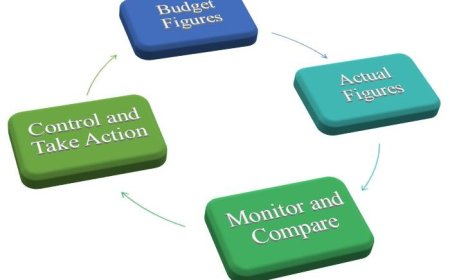Human computer interaction
Understanding Human-Computer Interaction (HCI) What is Human-Computer Interaction?, Historical Development of HCI, Core Principles of Human-Computer Interaction, Usability, User-Centered Design, Affordances and Signifiers, Accessibility, Feedback, Importance of HCI Across Different Domains, HCI in Education, HCI in Healthcare, HCI in Workplace Productivity, HCI in Gaming and Entertainment, Emerging Trends in HCI, Natural User Interfaces (NUIs), Augmented and Virtual Reality (AR/VR), Artificial Intelligence (AI) in HCI, Internet of Things (IoT) and HCI, Ethical Concerns in HCI, The Future of Human-Computer Interaction.

Introduction
Human-Computer Interaction (HCI) is an interdisciplinary field that focuses on the design, evaluation, and implementation of computer systems that are both usable and useful. As technology has rapidly evolved, so too has the need for effective interaction between humans and computers. HCI examines how people interact with computers and how these interactions can be improved to enhance user experience and optimize performance. This essay delves into the key concepts of HCI, its historical development, its importance in various domains, and emerging trends that are shaping the future of human-computer interactions.
The historical development of HCI can be traced back to the early days of computing, where user interfaces were primarily text-based and required specialized knowledge. As computers became more accessible, the need for intuitive interfaces emerged, leading to the development of graphical user interfaces (GUIs) in the 1980s. This pivotal shift allowed users to interact with computers using visual elements, such as icons and windows, making technology more approachable for the general population. The evolution of HCI has continued with the advent of touchscreens, voice recognition, and virtual reality, each innovation further bridging the gap between human cognition and machine functionality.
The importance of HCI cannot be overstated; it plays a critical role across various domains, including education, healthcare, and entertainment. In educational settings, effective HCI can facilitate learning by creating engaging and interactive environments that cater to diverse learning styles. In healthcare, user-centered design ensures that medical professionals can operate complex systems efficiently, ultimately improving patient care. Moreover, in the realm of entertainment, HCI principles drive the development of immersive experiences that captivate users and enhance engagement.
Looking ahead, emerging trends in HCI are set to redefine the landscape of human-computer interactions. The integration of artificial intelligence (AI) into user interfaces is revolutionizing the way users engage with technology, allowing for more personalized and adaptive experiences. Moreover, the rise of ubiquitous computing, where technology seamlessly integrates into everyday life, necessitates a deeper understanding of context-aware interactions. As we move towards a future where smart devices are omnipresent, the principles of HCI will be crucial in ensuring that these interactions remain intuitive, efficient, and enriching.
The field of HCI is not merely about improving usability; it is about understanding the complex relationship between humans and technology. As we continue to innovate and explore new frontiers, HCI will remain at the forefront of creating systems that empower users, enhance productivity, and ultimately, enrich the human experience.
Historical Context
The roots of Human-Computer Interaction (HCI) can be traced back to the early days of computing when systems primarily relied on command-line interfaces that required users to memorize intricate commands. This era, characterized by its steep learning curve, often alienated potential users and limited the accessibility of technology. However, as personal computing began to gain traction in the 1980s, a paradigm shift occurred with the emergence of graphical user interfaces (GUIs). This innovation not only transformed the user experience but also democratized access to computing, enabling a broader audience to engage with technology. The introduction of the mouse and desktop metaphors, such as windows, icons, and menus, made computers more intuitive and visually appealing, emphasizing the critical importance of usability in software design.
As the 1990s approached, the advent of the internet heralded a new era for HCI. The web became a pivotal platform for interaction, leading to the development of hypertext and multimedia interfaces that further enhanced user engagement. This period saw an increased focus on user-centered design principles, as designers began to prioritize the needs, preferences, and behaviors of users. The rise of e-commerce and online communities underscored the necessity for seamless interactions and effective navigation, prompting researchers and practitioners to explore the complexities of user experience (UX).
In the 21st century, HCI has evolved dramatically, fueled by advances in technology, the proliferation of mobile devices, and the advent of ubiquitous computing. Touchscreens, voice recognition, and gesture controls have redefined how users interact with technology, prompting a reevaluation of traditional design paradigms. The field has expanded to incorporate various domains, including cognitive psychology, computer science, design, and social sciences, demanding a multidisciplinary approach to understanding human interactions with technology.
Moreover, the emergence of artificial intelligence and machine learning has introduced new dimensions to HCI, enabling systems to adapt to user behavior and preferences in real time. As technology continues to evolve, the challenge for HCI professionals lies in creating interfaces that are not only functional but also emotionally resonant, fostering a deeper connection between users and their devices. The future of HCI will undoubtedly be shaped by ongoing research and innovation, as it strives to bridge the gap between human needs and technological capabilities, ensuring that technology remains a tool for empowerment and enrichment in an increasingly digital world.
Core Principles of HCI
Effective human-computer interaction (HCI) hinges on several core principles that facilitate seamless user experiences.
Usability: Usability is paramount, encompassing how easy and efficient it is for users to accomplish their tasks using a system. Key aspects include learnability, efficiency, memorability, error prevention, and user satisfaction. Designers must prioritize usability to ensure that users can quickly adapt to and navigate the technology. A system that is intuitive not only enhances user satisfaction but also fosters a sense of confidence and competence among users, ultimately leading to higher productivity.
User-Centered Design: User-centered design (UCD) is a fundamental principle of HCI that emphasizes involving users throughout the design process. By gathering user feedback and understanding their needs, designers can create systems that genuinely meet user requirements and enhance the user experience. UCD encourages iterative testing and refinement, ensuring that the final product is not only functional but also resonates with the target audience. This collaborative approach fosters innovation and helps in identifying pain points that might otherwise go unnoticed.
Affordances and Signifiers: Affordances are characteristics of an interface that suggest how it should be used (e.g., buttons that look clickable), while signifiers are cues that communicate the intended use of an interface element. Striking a balance between affordances and signifiers can significantly improve users' ability to interact with a system intuitively. Designers who master this balance create interfaces that feel natural and require minimal cognitive load, allowing users to focus on their tasks rather than deciphering how to use the system.
Accessibility: HCI also concerns making technology accessible to a diverse audience, including individuals with disabilities. Designers must consider the varying physical, cognitive, and sensory abilities of users to create inclusive interfaces that cater to all. Accessibility is not merely a compliance issue; it enriches the user experience for everyone by promoting universal design principles that benefit all users, regardless of their abilities.
Feedback: Providing timely and clear feedback is essential for effective interaction. Users should receive feedback from the system to understand the results of their actions, helping them adjust their behavior as necessary. This feedback loop is critical in reinforcing user actions, guiding them through complex processes, and ensuring that they remain engaged with the technology.
The core principles of HCI—usability, user-centered design, affordances and signifiers, accessibility, and feedback—serve as the foundation for creating effective and enriching user experiences. By adhering to these principles, designers can craft systems that not only meet user needs but also inspire trust and engagement in an increasingly digital world.
Importance of HCI Across Various Domains
The significance of Human-Computer Interaction (HCI) is evident across multiple sectors, driving innovation and enhancing user experiences in diverse fields.
Education: HCI plays a crucial role in enhancing educational technologies, enabling more effective teaching and learning experiences. Interactive interfaces, e-learning platforms, and educational apps are designed with HCI principles to engage students, facilitate collaboration, and provide accessible learning opportunities. By employing adaptive learning systems that respond to individual student needs, HCI fosters personalized education, allowing learners to progress at their own pace while ensuring that educators can monitor and support their development effectively.
Healthcare: In the healthcare sector, HCI contributes to the development of medical technologies and systems that improve patient care. User-friendly electronic health records (EHRs), telemedicine applications, and health monitoring devices all rely on HCI principles to ensure clinicians and patients can effectively interact with technology. Furthermore, the integration of HCI in wearable health devices allows for real-time data collection and analysis, empowering patients to take charge of their health while enabling healthcare providers to make informed decisions quickly.
Workplace Productivity: In professional settings, HCI design can optimize productivity by creating seamless workflows and minimizing friction in daily tasks. Tools like project management software, data analysis platforms, and communication tools are continuously refined through HCI research to cater to the evolving needs of users in the workplace. The implementation of intuitive dashboards and streamlined interfaces not only enhances user satisfaction but also drives efficiency, allowing teams to focus on strategic initiatives rather than grappling with complex technology.
Gaming and Entertainment: The gaming industry exemplifies the evolution of HCI, as it heavily relies on immersive experiences and user engagement. Game developers leverage HCI principles to create intuitive controls, dynamic interfaces, and interactive storytelling, resulting in more captivating experiences for players. Innovations such as virtual reality (VR) and augmented reality (AR) further showcase the potential of HCI to transcend traditional boundaries, offering users a more profound connection to digital environments.
Across these domains, the importance of HCI cannot be overstated. As technology continues to evolve, the principles of HCI will remain essential in shaping user experiences, ensuring that interactions with technology are not only efficient but also enjoyable and meaningful. By prioritizing HCI in design and development, organizations can create systems that empower users, enhance productivity, and ultimately improve outcomes across various sectors.
Emerging Trends in HCI
The landscape of Human-Computer Interaction (HCI) is continually evolving, driven by technological advancements and changing user expectations. Some of the most notable trends include:
Natural User Interfaces (NUIs): NUIs utilize touch, gestures, voice, and even facial recognition to create more intuitive interactions. By enabling users to interact with technology using natural movements and expressions, NUIs aim to reduce barriers in communication between humans and computers. This shift towards more organic forms of interaction not only enhances usability but also fosters a deeper emotional connection between users and devices.
Augmented and Virtual Reality (AR/VR): AR and VR technologies are pushing the boundaries of HCI by offering immersive experiences that blend digital and physical environments. In these virtual realms, interaction design plays a pivotal role in ensuring that users can navigate and engage with virtual spaces effectively. The challenge lies in creating intuitive controls and feedback mechanisms that allow users to feel truly present in these environments, enhancing their experience and engagement.
Artificial Intelligence (AI): AI is reshaping HCI by enabling more personalized and adaptive user experiences. AI-powered systems can learn from user behavior, anticipate needs, and offer tailored recommendations, enhancing the overall interaction between humans and machines. The integration of AI in HCI not only improves efficiency but also empowers users to achieve their goals with greater ease, as systems become increasingly responsive to individual preferences and contexts.
Internet of Things (IoT): The proliferation of IoT devices has introduced new challenges and opportunities for HCI. As more devices become interconnected, designers must focus on creating seamless interactions across multiple platforms and devices while ensuring data privacy and security. This interconnectedness necessitates a holistic approach to design, where the user experience transcends individual devices and encompasses a cohesive ecosystem of interactions.
Ethical HCI: As technology becomes increasingly integrated into daily life, ethical considerations in HCI are gaining prominence. Designers and researchers must address issues such as data privacy, algorithmic bias, and the potential psychological impact of technology on users. This ethical imperative calls for a user-centered design philosophy that prioritizes transparency, accountability, and inclusivity, ensuring that technology serves the best interests of all users.
As we navigate these emerging trends in HCI, it becomes essential for designers and technologists to remain vigilant and responsive to the evolving landscape. By embracing innovation while upholding ethical standards, the future of HCI can foster richer, more meaningful interactions between humans and technology.
Conclusion
Human-Computer Interaction (HCI) is a vital field that continues to evolve rapidly in response to technological advancements and user needs. By focusing on usability, user-centered design, and accessibility, HCI professionals can create systems that enhance the way individuals interact with technology across various domains. As emerging trends such as natural user interfaces, augmented reality, and artificial intelligence shape the future of HCI, it is essential for designers and researchers to remain committed to ethical practices that prioritize user experience and societal well-being. Ultimately, effective HCI serves as a bridge that connects human capabilities with the vast potential of technology, fostering innovation and improving quality of life.
As we navigate this dynamic landscape, the importance of interdisciplinary collaboration becomes increasingly evident. HCI professionals must engage with experts from diverse fields, including psychology, cognitive science, and design, to cultivate a holistic understanding of user behavior and preferences. This collaborative approach not only enhances the design process but also ensures that solutions are grounded in a comprehensive understanding of human factors, leading to more intuitive and effective interactions.
Moreover, the integration of emerging technologies such as machine learning and the Internet of Things (IoT) presents both opportunities and challenges for HCI. As systems become more interconnected, the potential for personalized user experiences increases dramatically. However, this personalization must be approached with caution, as it raises questions about privacy, data security, and the ethical implications of algorithmic decision-making. HCI practitioners must advocate for transparency and user control, empowering individuals to make informed choices about their interactions with technology.
Additionally, the global nature of technology necessitates a focus on inclusivity. HCI should strive to accommodate diverse populations, including those with disabilities, different cultural backgrounds, and varying levels of technological proficiency. By prioritizing accessibility, HCI can ensure that all users benefit from technological advancements, fostering a more equitable digital landscape.
Looking ahead, the future of HCI will undoubtedly be shaped by ongoing research and innovation. As we embrace advancements in virtual reality and immersive experiences, the potential for transformative applications in education, healthcare, and entertainment becomes increasingly apparent. It is incumbent upon HCI professionals to harness these innovations responsibly, ensuring that they enhance human experience rather than detract from it.
As HCI continues to evolve, its practitioners must remain vigilant stewards of ethical design, championing user-centered principles that enhance interaction, foster innovation, and ultimately enrich the human experience in an increasingly digital world.
What's Your Reaction?
 Like
0
Like
0
 Dislike
0
Dislike
0
 Love
0
Love
0
 Funny
0
Funny
0
 Angry
0
Angry
0
 Sad
0
Sad
0
 Wow
0
Wow
0









































